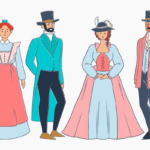Overview to Balmoral Bonnets: Scottish Tradition Meets Timeless Fashion
The Balmoral bonnet is more than just a piece of headwear—it’s a symbol of Scottish heritage, military pride, and timeless fashion. Whether you’re a history enthusiast, a highland dress collector, or simply someone drawn to unique accessories, understanding the Balmoral bonnet’s significance, how it differs from other Scottish caps, and how to wear it correctly will help you appreciate this cultural icon on a deeper level.
In this comprehensive guide, we’ll explore the origins, cultural relevance, modern usage, styling tips, and more about Balmoral bonnets to help you make an informed purchase or wear it with confidence.
H2: What is a Balmoral Bonnet?
The Balmoral bonnet is a traditional Scottish cap, historically worn as part of Highland dress. It has a flat, round crown and is typically made from wool felt. It is named after Balmoral Castle in Aberdeenshire, Scotland—a residence of the British royal family.
H3: Key Features of a Balmoral Bonnet
- Flat, soft crown (unlike rigid military hats)
- Diced band (a checked pattern around the edge, often in red and white)
- Toorie (a pom-pom on top, usually red)
- Ribbons that hang down the back
- Made from felted wool or knitted wool
It is commonly worn with Highland regalia such as kilts and Prince Charlie jackets, especially in formal or ceremonial settings.
H2: History and Evolution of the Balmoral Bonnet
The Balmoral bonnet dates back to the 16th century, evolving from earlier Scottish bonnets such as the blue bonnet. Originally a civilian headpiece, it became widely associated with Scottish military regiments and Highland dress in the 19th century.
H3: Military Use and Highland Regiments
During the Victorian era, the British Army adopted distinctive Highland uniforms. Regiments like the Black Watch, Gordon Highlanders, and others integrated the Balmoral bonnet into their uniforms, cementing its place in Scottish military tradition.
In military contexts, these bonnets may feature:
- Clan badges
- Hackles (feather plumes denoting regiment)
- Regiment-specific colors or patterns
H2: Balmoral Bonnet vs. Glengarry Bonnet: What’s the Difference?
A common point of confusion is the difference between the Balmoral and the Glengarry bonnet. Though similar, they serve different purposes and have distinct shapes.
| Feature | Balmoral Bonnet | Glengarry Bonnet |
|---|---|---|
| Shape | Flat and round | Boat-shaped, creased crown |
| Formality | Slightly more traditional | More common in military |
| Pom-pom (Toorie) | Yes, usually red | Yes |
| Side ribbons | Yes | Yes |
| Origin | Older than Glengarry | 18th century onwards |
Tip: If you’re going for a formal Highland outfit, the Balmoral is usually the preferred choice due to its historical authenticity and rounder shape.
H2: How to Wear a Balmoral Bonnet Properly
Whether you’re donning your bonnet for a wedding, Burns Night, or a Highland Games event, wearing it correctly is essential for tradition and style.
H3: Positioning
- Worn flat across the top of the head
- Tilted slightly to the right
- Ribbons at the back hang loosely but do not tie
H3: Pairing with Highland Dress
- Typically worn with:
- Prince Charlie jackets
- Kilts
- Sporrans
- Ghillie brogues
Optional additions:
- Clan crest badge on the left front side
- Hackle or feather to indicate regiment or clan affiliation
H2: Styling a Balmoral Bonnet in Modern Fashion
While traditionally worn with Highland dress, the Balmoral bonnet is finding new life in contemporary fashion. Here’s how to modernize your look while respecting tradition:
H3: Smart-Casual Looks
- Pair it with a wool coat or tweed blazer
- Coordinate with tartan scarves or accessories
- Keep the rest of your outfit simple and neutral
H3: Fashion Tips for Everyday Wear
- Use neutral or muted colors for versatility
- Avoid pairing with full Highland attire unless it’s a formal event
- Add a subtle clan badge or minimalist brooch for a stylish nod to heritage
H2: Where to Buy Authentic Balmoral Bonnets
Buying a quality Balmoral bonnet ensures durability, tradition, and comfort. Here are top recommendations:
H3: Reputable Online Retailers
- Geoffrey (Tailor) Highland Crafts – Handcrafted in Scotland
- ScotlandShop.com – Offers clan-specific customizations
- Houston Kiltmakers – Offers military and civilian options
- Amazon UK (check seller reputation)
H3: What to Look for
- 100% wool material
- Made in Scotland (or clearly identified origin)
- Correct sizing (head circumference in cm/inches)
- Diced band and red toorie for authenticity
Tip: Avoid costume versions made from acrylic or polyester blends if you’re seeking authenticity.
H2: Balmoral Bonnet and Scottish Culture
The Balmoral bonnet isn’t just about looks—it’s about identity, pride, and history. It’s often worn at:
- Weddings
- Funerals
- Pipe band performances
- Clan gatherings
- Military ceremonies
Wearing one respectfully acknowledges Scottish tradition, particularly when paired with a clan badge or family tartan.
H2: Caring for Your Balmoral Bonnet
Proper care ensures your bonnet lasts for generations.
H3: Cleaning Tips
- Dry clean only for wool models
- Spot clean with a damp cloth if needed
- Avoid machine washing or tumble drying
H3: Storage Advice
- Store flat or on a hat stand
- Keep out of direct sunlight to avoid fading
- Do not fold or crush
H2: FAQs about Balmoral Bonnets
Q1.What is the purpose of the toorie on a Balmoral bonnet?
The toorie (the pom-pom on top) is a decorative element. In military units, it sometimes signifies rank or regiment, but generally, it’s traditional styling.
Q2.Can women wear Balmoral bonnets?
Absolutely! While historically worn by men, many modern women wear them at formal events, pipe bands, and cultural festivals.
Q3.Is the Balmoral bonnet still used in the British Army?
Yes, certain regiments, particularly ceremonial Highland units, still use the Balmoral as part of their dress uniforms.
Q4.How should I measure for a Balmoral bonnet?
Measure the circumference of your head just above your ears using a soft measuring tape. Most bonnets are sized in centimeters or inches.
Q5.What is the difference between a Balmoral and a Tam o’ Shanter?
The Tam o’ Shanter is larger, floppier, and more informal. The Balmoral is more structured and traditionally used in formal Highland wear or military dress.
Conclusion: Why the Balmoral Bonnet Still Matters
From the Highlands of Scotland to ceremonial parades and cultural celebrations worldwide, the Balmoral bonnet remains a symbol of pride, heritage, and style. Understanding its origins, wearing it with respect, and choosing a quality version will connect you not only to Scottish history but to a timeless tradition still cherished today.
Whether you’re a Scot by birth, descent, or simply admiration, the Balmoral bonnet invites you to wear a piece of history—with honor.



